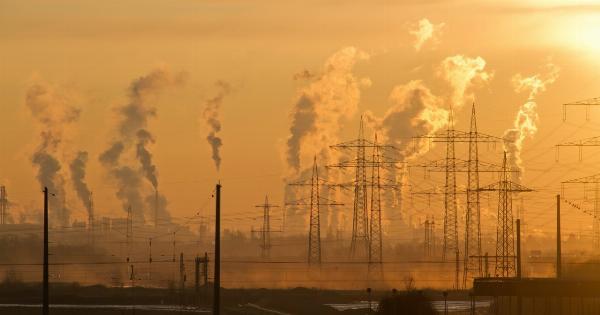Air pollution is a serious concern for both men and women, affecting respiratory health and the cardiovascular system. However, recent studies have also shown that air pollution can have a major impact on women’s fertility as well.
This article explores the impact of air pollution on women’s fertility and the measures needed to prevent and mitigate its effect.
What is Air Pollution?
Air pollution is the presence of harmful chemicals and compounds in the air that we breathe.
These pollutants can come from both natural sources, such as wildfires and volcanic eruptions, and human activities, such as transportation, industrial processes, and fossil fuel burning. The most common types of air pollutants include nitrogen oxides, sulfur oxides, carbon monoxide, particulate matter, and ozone.
How does Air Pollution Affect Women’s Fertility?
Women who are exposed to air pollution can experience a range of fertility problems, including menstrual irregularities, delayed conception, miscarriage, and stillbirth.
Research has shown that higher levels of air pollution can lead to a higher risk of infertility in women, with several factors contributing to this effect.
Impact of Particulate Matter
Particulate matter (PM) refers to tiny particles that are smaller than 10 micrometers in diameter. These particles can come from a variety of sources, such as vehicle exhaust, industrial emissions, and dust.
PM can penetrate deep into the lungs and cause inflammation, oxidative stress, and DNA damage, which can affect reproductive health in women.
Studies have shown that exposure to PM can lead to altered menstrual cycles and decreased fertility in women.
A study in China found that women who were exposed to higher levels of PM were more likely to experience menstrual cycle irregularities and have a longer time to become pregnant. Another study in the US found that women who were exposed to higher levels of PM had a higher risk of infertility.
Impact of Nitrogen Oxides and Sulfur Oxides
Nitrogen oxides (NOx) and sulfur oxides (SOx) are gaseous pollutants that are released from combustion processes. These pollutants can react with other chemicals in the atmosphere to form secondary pollutants, such as ozone and particulate matter.
Exposure to these pollutants can lead to inflammation, oxidative stress, and DNA damage, which can affect reproductive health in women.
A study in Europe found that women who were exposed to higher levels of nitrogen dioxide (NO2) had a higher risk of infertility.
Another study in Italy found that women who were exposed to higher levels of sulfur dioxide (SO2) had a higher risk of miscarriage.
Impact of Ozone
Ozone is a secondary pollutant that is formed from the reaction of nitrogen oxides and volatile organic compounds in the presence of sunlight.
Exposure to ozone can lead to inflammation, oxidative stress, and DNA damage, which can affect reproductive health in women.
A study in California found that women who were exposed to higher levels of ozone during the first trimester of pregnancy had a higher risk of miscarriage.
Another study in Mexico City found that women who were exposed to higher levels of ozone had a higher risk of premature birth.
Preventing and Mitigating the Impact of Air Pollution on Women’s Fertility
To prevent and mitigate the impact of air pollution on women’s fertility, there are several measures that can be taken:.
Reducing Exposure to Air Pollution
Women can reduce their exposure to air pollution by staying indoors during times of high pollution, using air filters in their homes, and using public transportation or carpooling instead of driving alone.
It is also important to avoid exercising during times of high pollution and to wear a mask when outside.
Government Regulations
Government regulations are needed to reduce air pollution at the source. This can include stricter emissions standards for vehicles and industry, increasing the use of renewable energy, and promoting public transportation.
Governments can also monitor air quality and issue alerts and advisories when pollution levels are high.
Advocacy and Education
Advocacy and education are important for raising awareness about the impact of air pollution on women’s fertility.
This can include educating women about the risks of pollution exposure, advocating for government action, and encouraging individual action to reduce pollution.
Conclusion
Air pollution is a major threat to reproductive health, particularly among women. The impact of air pollution on women’s fertility is a serious concern that cannot be overlooked.
It is important for individuals, governments, and organizations to take action to reduce air pollution and mitigate its impact on women’s fertility.


























